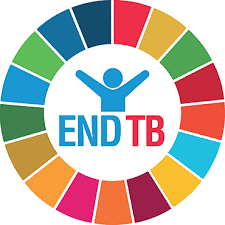

When Canada invests in humanitarian relief and development projects overseas, these funds are disbursed as Canada's Official Development Assistance or “ODA”. (Pronunciation note: To use the shortened form, say "oh-dee-ay", not "oh-da".) ODA is defined as government aid that promotes the economic development and welfare of the world’s least-developed and low- and middle-income countries. The Organization for Economic Cooperation and Development (OECD) maintains a list of eligible developing countries and territories that is updated every three years; only aid to these countries counts as ODA. 1
Humanitarian Aid + Development Aid = ODA
A portion of ODA goes to humanitarian aid, which aims specifically to save lives, alleviate suffering, and protect human dignity, both during and in the aftermath of emergencies. Humanitarian aid can include the immediate emergency response to a crisis, reconstruction and rehabilitation after the emergency has passed, and also disaster prevention and preparedness. The larger portion of ODA is considered development aid, which represents longer-term investments to address poverty and strengthen the economic development and resilience of receiving nations. These investments target areas such as such as education, health, water and sanitation, climate change mitigation and adaptation, and governance. Aid includes grants, "soft" loans, and the provision of technical assistance. (Soft loans are loans with a grant portion that is at least 25% of the total.)
What is not ODA?
Military aid and promotion of a donor’s security interests are not ODA.
Commercial transactions are not ODA.
Bilateral and Multilateral Aid
There are two ways in which governments disburse ODA: bilaterally and multilaterally. In bilateral aid only two countries are involved. The aid flows from the donor country to the recipient country (either directly or through a development organization). Multilateral aid represents contributions from multiple governments to multilateral agencies that use the pooled funds to deliver their own development programs. We are all familiar with multilateral institutions such as the World Food Programme, the Global Fund, the World Health Organization, and UNICEF.
Who Tracks ODA?
ODA data from all countries is collected, verified, and made publicly available by the Organization for Economic Cooperation and Development (OECD). The OECD tracks countries’ public commitments to development assistance as well as their follow-through in actual disbursements. The OECD also monitors specific policy objectives in development programs and projects. Currently the eleven development priorities they are tracking are:
- Gender equality
- Nutrition
- Reproductive, maternal, newborn and child health
- Inclusion and empowerment of persons with disabilities
- Climate change adaptation
- Climate change mitigation
- Environment
- Disaster risk reduction
- Biodiversity
- Combatting desertification
- Democratic and inclusive governance 2
How Canada Measures Up
In 1970, a UN Resolution called for economically advanced countries to contribute a minimum of 0.7% of Gross National Income (GNI) to Official Development Assistance. Canada has never met that target. Most recent data shows that in 2022, Canada ranked 16th among the 32 members of the OECD Donor Assistance Committee, with Canada contributing just 0.37% of our Gross National Income (GNI) to ODA. 3
In December 2018 the Report of the Standing Committee on Finance recommended that Canada increase its Official Development Assistance with the goal of allocating 0.7% of Gross National Income to international assistance by 2030. 4 The current Liberal government has repeatedly promised to increase Canada’s international development assistance every year until 2030 to help realize the Sustainable Development Goals (SDGs). This promise was restated in the Minister of International Development’s most recent mandate letter. 5 However, in federal Budget 2023, the government broke this promise and reduced international assistance spending by 15%.
GRAN’s Position
GRAN continues to advocate for Canada to increase ODA and to hold the government to account on its promises. During GRAN’s Right to Food Campaign, we are also focused on urging the government to improve the quality of its ODA funding to more effectively address the intersecting crises of global hunger and climate change.
Dig Deeper...
- Why International Development Matters -- Watch this 2-minute video by Canada’s Minister of International Development Ahmed Hussen explaining why Canadians should support international development efforts.
- Canadian Leadership in a Deeply Insecure World -- Read this open letter to Canada's Prime Minister, signed by GRAN and over 100 of Canada's international cooperation agencies, calling on Canada to increase its investments in development programs and humanitarian aid.
- The Global Hunger Crisis: Paths to Food Justice – Read this 2-page info sheet prepared by GRAN, making the case for Canada’s increased investment in international assistance and outlining specific ways in which the quality of that funding can be improved.
- Official Development Assistance – Explore the information provided by the ONE Campaign to learn how much various countries are giving in global aid, where the aid goes, and on what it is spent.
[This is the twenty-third installment in GRAN’s Small Sips series on The Right to Food.]

http://grandmothersadvocacy.org


